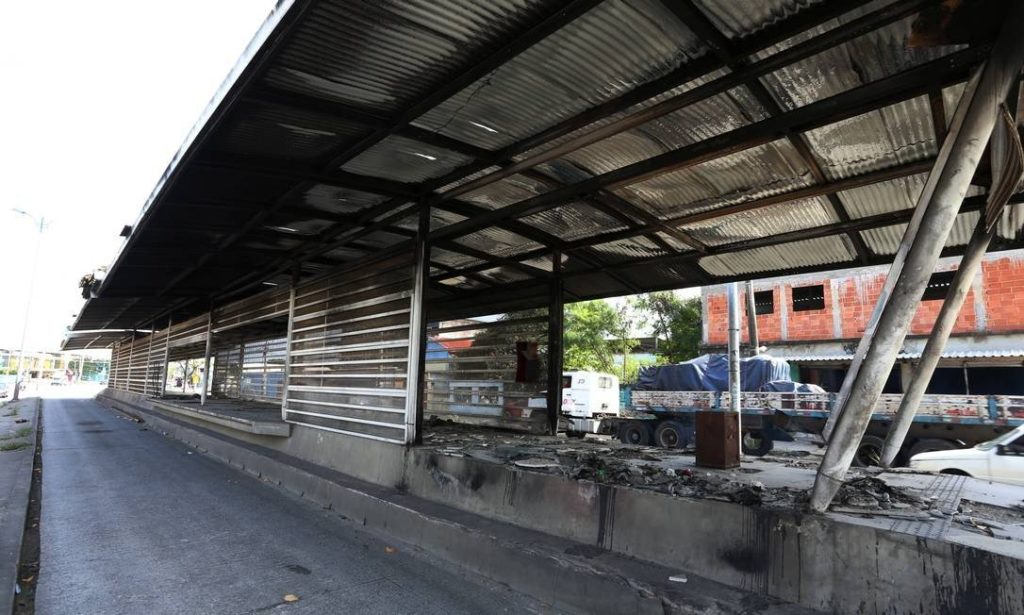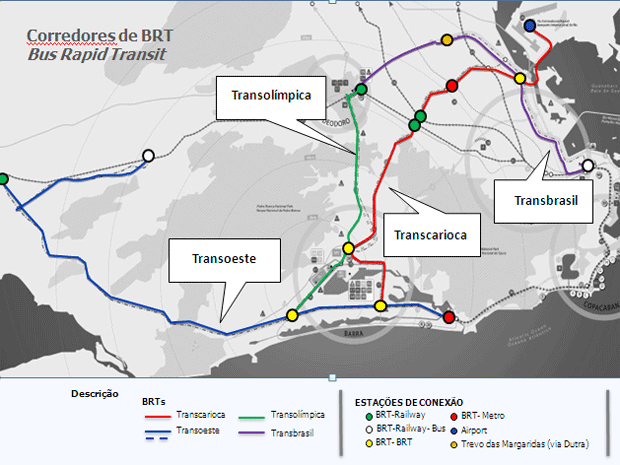Column By Scott Salmon
RIO DE JANEIRO, BRAZIL – An improvement in Rio’s transportation infrastructure was perhaps the most positive legacy of the Rio 2016 Olympics. Yet, already, one of its most vital components is falling apart.

The transportation legacy of Rio’s Olympics can be understood as a set of ambitious goals: steadily diminished, surreptitiously corrupted, only partially realized, and in some cases simply abandoned. Nevertheless, important components were completed, and they have transformed the city’s public transit system.
The jewel of the city’s revamped transportation infrastructure is undoubtedly MetrôRio where a single line of five stations was expanded to forty-one stations on three rail lines operating both above and below ground.
Given that this network was mostly retro-fitted to a densely populated urban area with uniquely challenging geology, it’s realization represents a significant accomplishment.
Nevertheless, it’s not difficult to find fault with MetrôRio. It was poorly planned, there were critical engineering lapses, and the process was wastefully piecemeal. Construction deadlines and budgets were routinely and massively overshot, accusations of profiteering plagued the project, and it remains incomplete.
Despite all this, MetrôRio is, arguably, the most significant material legacy of the 2016 Olympics. For millions of Cariocas lucky enough to be able to use it, the experience of navigating Rio de Janeiro has been transformed.
From an urban geographer’s perspective, this relative exclusivity encapsulates the fundamental flaw of MetrôRio as a public transport system. It’s rail lines serve to reinforce the city’s traditional – already entrenched, affluent, and well served – coastal axis, centered as it is on the South Zone and Centro.
As a result, it largely neglects the cities populous and fast-growing interior, precisely those areas in greatest need of more transport alternatives. In this sense, the design of MetrôRio was not an exercise in planning for the future but of entrenching the unequal legacy of the past.
For this reason, the surface-based rapid transit (BRT) component of Rio’s revamped transport system – reaching as it does into relatively underserved parts of the city’s sprawling northern and western zones – assumed particular importance.
Utilizing dedicated lanes on existing roads, the BRT offered the potential of relatively efficient cross-city transport with a light footprint devoid of major engineering obstacles or massive construction costs.

Unfortunately, the routes chosen for the BRT don’t serve the city’s corridors of greatest need – which flow from the North and West Zones to downtown, the South Zone, and the commercial areas of the North Zone. A planned fourth line, the TransBrasil, has not yet been completed.
Already, the extant BRT network is in crisis. Transferred to City control in January, the system currently operates with two-thirds of its planned fleet and an ever-dwindling number of stations.
The Transoeste line, which connects the greatest physical expanse of Rio de Janeiro to its economic hubs, is a discouraging case in point.
The stretch between Campo Grande and Santa-Cruz – which the Transoeste connects to the Barra de Tijuca area – was inaugurated in 2014. It was intended to serve as many as 30,000 people per day with the promise that passengers would not have to wait more than 5 minutes for service.
Already 22 of the line’s stations have been closed: primarily due to persistent violent crime and repeated vandalism designed to defeat ticketing mechanisms.
The abandoned stations, each costing approximately R$1 million (US$250,000) to construct, have either been razed or more productively, “repurposed”, as in the case of the Prefeito Alim Pedro Station, which now provides makeshift accommodation for a homeless couple expecting their first child.

During a trip on the Transoeste, the sense of deterioration is inescapable. The original articulated BRT vehicles are in poor repair and in some cases visibly falling apart. One I recently traveled on was missing half of its rear exit door.
At those stations still-functioning, there are large gaps between the bus and the platform, making the BRT virtually inaccessible for the aged, infirm or physically impaired.
The lift for disabled passengers was itself disabled when I passed through the Jardim Oceânio station.
Inevitably this service vacuum is being filled, albeit by slower and poorer alternatives: the regular, already overcrowded buses operating outside the exclusive BRT lanes, and once prohibited private van services are making a clandestine return.
The decline of the BRT is mostly invisible to those not dependent on it for access to their livelihoods or social circulation, but the system’s decay only serves to fragment the city further and impede the economic growth and prosperity of the area as a whole.
In fundamental ways, infrastructure is a social justice issue. A properly functioning and equitably planned public transportation system affords access for the city’s poorest-served communities to education, employment, services, and opportunities for self-advancement.
It is also, crucially, an economic imperative for the city as a whole. For Rio to prosper, it must efficiently integrate these neighborhoods – and their immense human capital – into the legitimate urban economy to stimulate its economic growth.
Rio de Janeiro must find the resources and the imagination to deal with the problems facing the BRT. The quality of life for millions of the city’s residents – whether directly or indirectly – depends upon it.


